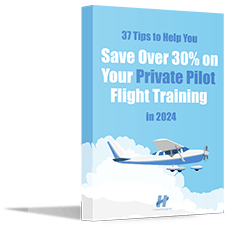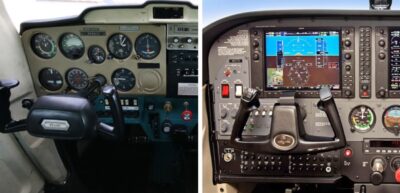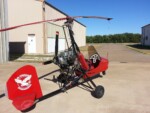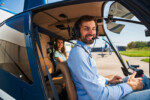Getting the Most Bang for Your Buck During Flight Training – Part 2
25 January 2018 | Updated on February 05, 2024
This post is part of the story series Getting the Most Bang for Your Buck During Flight Training.
View all stories in this seriesIn part one of this series we talked about the advantages of buying flight time in bulk, as well as the superior and often overlooked advantage of leveraging your study time for free. In this edition we are going to discuss another avenue that can help you to save some money during your flight training: finding the simplest airplane possible for your mission.
So lets see if I can overwhelm you for a second and then try to bring it back to bare-bones simplicity.
Lets say that you are working on (or want to start working on) your private pilot license. You start doing some research online at local flight schools and start seeing prices something like this:
Cessna 150 – $83/hr
Cessna 172 – $105/hr
Piper Warrior – $112/hr
Diamond Katana – $128/hr
Cessna 172 – $160/hr
Cirrus SR22 -$299/hr
And that is just a general selection of typical airplanes available for initial flight training! So how can you possibly pick the right one? Why are the prices so different?
And wait, what? Am I seeing two different prices for a Cessna 172?
Yes, that’s correct. The reason you see different prices across what appears to be the same airplane is because of things like this:
“Garmin 430 and IFR equipped”
“Garmin GTN650 GPS/NAV/COM”
“BendixKing KX -155 with Glide Slope”
“Garmin G1000 and IFR Certified”
Assuming you are just beginning your flight training – do you have any idea what any of that means? Probably not. (The simple answer is different types of radio and navigation equipment.)
So lets bring it back down again. What is the right airplane for you and your training?
Think about what your goal is as a pilot, and your limitations, physical and financial.
If your plan is to be flying a Cirrus regularly, then perhaps you should go ahead and do your training in that airplane. But if not, why spend so much extra money doing training in a high performance, expensive airplane?
Now how about the difference in price between the Cessna 172s? Well the cheaper one most likely is going to just be equipped with your standard “steam” gauges, while the more expensive one perhaps will be equipped with a modern “glass” cockpit. But do you need rows of giant screens for learning the basics? No.
There are certain physical limitations to keep in mind as well. If you are a bigger person there are certain airplanes that will simply be impractical for you. I have a friend who is so tall that he physically cannot fit inside a Cessna 150. Likewise, a Cessna 150 has much lighter weight limits, so you must consider not only your weight, but also the combined weight of you, your instructor, and fuel.
Consider the difference even between a basic Cessna 150 and a basic Cessna 172. Over a 40-hour period of time the cost of rental alone to fly in the 150 will save you $880 over the 172!
So lets simplify and summarize this now.
Less airplane = less money.
My personal opinion when it comes to initial flight training is to do it with as little as possible. Find the cheapest airplane you can practically use. You don’t NEED a glass cockpit. You don’t NEED leather seats and air conditioning. You don’t NEED a turbocharged engine. Keeping it simple will keep it cheaper.
Keeping things like this in mind will allow you the potential to shave off a few more dollars during your training. And lets face it, every dollar counts.
This post is part of the story series Getting the Most Bang for Your Buck During Flight Training.
View all stories in this series




























